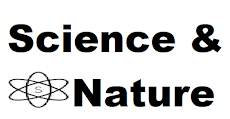The James Webb Space Telescope (JWST), humanity's most advanced eye in the cosmos, has once again amazed the scientific community by capturing an ultra-deep image of the universe. This image peers further back in time and space than any telescope before it. But while the breathtaking beauty and complexity of the image are undeniable, it has also stirred unsettling questions about the very foundation of our understanding of the universe. Could we have made a crucial mistake in interpreting what we see?
A New Ultra-Deep Field
The newly released ultra-deep image from the JWST reveals a tapestry of distant galaxies, many of which are unlike anything astronomers anticipated. These ancient galaxies, some of which are believed to have formed just a few hundred million years after the Big Bang, are defying expectations in terms of size, shape, and composition.
Not only are these galaxies more massive than predicted by current cosmological models, but some exhibit structures, such as spiral arms, that were thought to take billions of years to form. This is forcing scientists to reconsider how galaxies evolved in the early universe and whether our theories about cosmic history are as robust as once believed.
The Big Bang Under Scrutiny
One of the most contentious issues arising from the JWST's observations is how they align—or don’t—with the Big Bang theory. The standard model of cosmology, which has been a cornerstone of modern astrophysics, suggests that the universe began approximately 13.8 billion years ago.
Yet, the ultra-deep image reveals galaxies that appear to challenge this timeline. Some galaxies are brighter, more evolved, and more complex than they should be given their supposed age. This has led a growing number of scientists to question whether our current understanding of the universe's infancy and development might be incomplete—or even flawed.
Could these findings indicate that the universe is older than we think? Or do they suggest an entirely different process of cosmic formation that we have yet to comprehend?
The "Cosmic Ladder" Problem
Another critical issue highlighted by the JWST’s data is the so-called "cosmic distance ladder" problem. This method, used to calculate the distances of celestial objects, is foundational to our understanding of the universe's scale.
Discrepancies in distance measurements—especially concerning galaxies in the ultra-deep image—suggest that the cosmic ladder may not be as stable as we assumed. If these distances are miscalculated, it could ripple through our understanding of the universe's size, expansion rate, and age.
Did We Underestimate the JWST?
The JWST's ability to observe in infrared light has allowed it to peer through cosmic dust and uncover hidden objects in the universe. This unprecedented capability is providing scientists with data that challenges decades of observations made by the Hubble Space Telescope and other instruments.
However, this new perspective comes with a caveat: interpreting JWST data correctly requires a level of precision that the scientific community is still grappling with. Could some of the anomalies observed in the ultra-deep image be a result of misinterpretation rather than actual deviations from established theory?
What If We’re Missing Something Fundamental?
The findings have reignited discussions about "unknown unknowns" in cosmology. What if the anomalies in the ultra-deep image are pointing to something we haven’t yet considered?
Some theorists suggest that we may need to incorporate new physics into our understanding of the universe—perhaps involving dark matter, dark energy, or even the possibility of a multiverse. Others propose that we might be observing the effects of unknown processes that governed the early universe, such as previously unconsidered interactions between matter and radiation.
A Call for Reassessment
The ultra-deep image from the JWST is a stark reminder that science is an ever-evolving process. While the telescope has provided us with an unprecedented view of the cosmos, it has also underscored how much we still have to learn.
As scientists scramble to make sense of these findings, one thing is clear: the universe is more complex and mysterious than we ever imagined. The JWST may have delivered answers to some of our questions, but it has also raised new ones—ones that could fundamentally reshape our understanding of the cosmos.
Conclusion: A Humbling Discovery
The new ultra-deep image captured by the James Webb Space Telescope is not just a triumph of engineering; it’s a humbling reminder of the limits of human knowledge. Have we made a crucial mistake in our interpretation of the universe's past? Or are we on the verge of a paradigm shift that will redefine everything we know about existence?
Only time—and further exploration—will tell. Until
then, the JWST’s images will continue to inspire awe, challenge assumptions,
and push the boundaries of human curiosity.

.jpg)



0 Comments